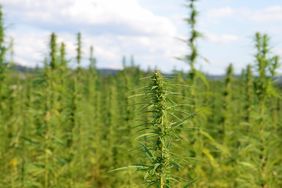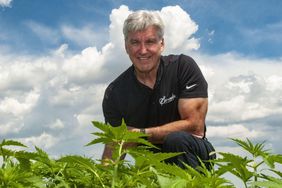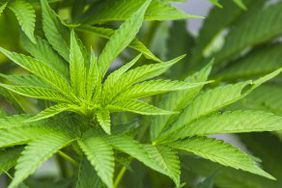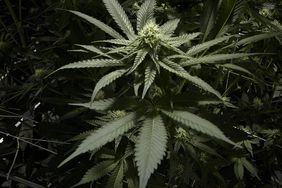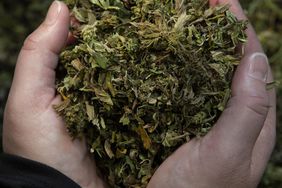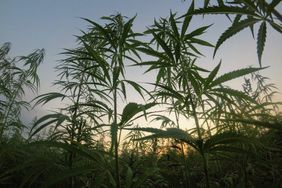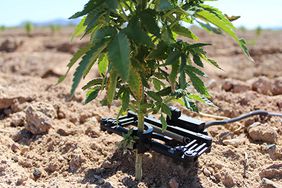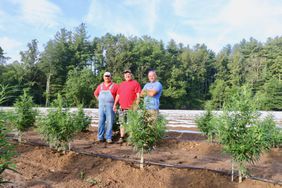:max_bytes(150000):strip_icc()/D3_5229-2000-b70ce53ec54447e1b87b2009642d1a3b.jpg)
In a time when there seems to be little good news in agriculture, hemp is offering farmers hope. The hemp-derived CBD market is projected to top $23 billion by 2023. At the farm level, it could potentially lead to over $40,000 per acre in revenue, according to the Hemp Cultivation Landscape study conducted by the Brightfield Group.
The study estimates that 285,000 acres of industrial hemp were planted in the U.S. this year, an increase of 72% from 2018. Although there are clear risks in growing hemp for CBD, about 87% of those acres are expected to be used for CBD processing in 2019. As the industry matures and other uses for the crop are realized, the percentage of hemp planted for CBD will decline slightly from 87% in 2019 to 82% by 2023, according to the study.
States Legally Growing Hemp
As of September 2019, there were 34 states that allow commercial hemp cultivation; while four states (Idaho, South Dakota, Mississippi, and Georgia) prohibit it. As a direct result of the 2018 Farm Bill, a number of states that are currently conducting research only or pilot programs are expected to expand to commercial cultivation in the not so distant future. The top five states growing the most acres of hemp include Colorado (42,500), Oregon (29,859), Montana (29,400), Tennessee (20,000), and Arizona (18,000).
Growth Projections
The study's researchers expect hemp acres to increase at an annual rate of over 75% through 2023, which would result in 2.7 million planted acres. Below is a breakdown of the 10 states projected to increase their hemp acres the most.
| State | 2019 | 2023 |
| Colorado | 42,500 | 313,059 |
| Oregon | 29,859 | 275,357 |
| California | 12,886 | 252,487 |
| Arizona | 18,000 | 243,786 |
| Tennessee | 20,000 | 221,298 |
| Kentucky | 15,000 | 166,074 |
| Michigan | 16,122 | 139,046 |
| Montana | 29,400 | 135,700 |
| Wisconsin | 8,479 | 100,860 |
| Nevada | 10,378 | 88,587 |
Seeds
The study found that cloned material was preferred over seeds to ensure that only female plants were produced. Farmers that do use seeds were purchasing them from Oregon, North Carolina, and Colorado. Clones are cuttings taken from a mother plant. Kentucky, Colorado, Tennessee, and Oregon are the most popular states to purchase clones. In fact, almost all of the suppliers in Colorado sold out of clones in 2019.
Use of Fertilizer and Added Nutrients
There seems to be three distinct approaches to fertilizer use.
- Fertilizer is not necessary. Farmers who follow this school of thought believe one of the benefits of growing hemp is that it requires no added fertilizer or feed.
- Few nutrients are needed. These farmers use budget-friendly options for nutrients like rabbit pellets and bat droppings.
- Nutrients are a must. Farmers who do use fertilizer believe hemp requires nutrients similar to corn. These farmers are adding nutrients and beneficial bacteria throughout the growing season.
Of the farmers who do believe in the benefits of fertilizer, nitrogen is considered the most important nutrient for hemp. Most farmers also use potassium and phosphorous. However, they are not always necessary. Some also used small amounts of sulfur, gypsum, salts, magnesia, and/or bacteria. Almost every farmer the researchers surveyed preferred to use organic fertilizer when possible.
The average spent on fertilizer was $300 to $350 per acre, but this ranged from $85 to $1,000 per acre. A number of factors play into this figure including what the previous crop was and the farmer's experience.
Risks of Growing Hemp
Besides the risk of harvesting a hot crop, there are four key challenges farmers who grow hemp face.
- Difficult to find certified feminized seeds and clones. Since CBD levels are highest in unpollinated female plants, they are in high demand. Because there has been a shortage of certified feminized hemp seeds, farmers have turned to feminized seeds and high-CBD seeds with no guarantee of male plants or high CBD content.
- Labor-intense crop. There is a lot of manual labor involved in raising hemp, especially during harvest. The harvest equipment for hemp is limited and some farmers are retrofitting their machinery to harvest hemp floral material, which is where the CBD content is the highest.
- Lack of traditional markets. Few marketplaces offer price transparency and not all companies are buying the hemp from farmers after they have agreed to purchase it.
- Pollen drift issues, cross-pollination risks. If male hemp plants, which are grown for fiber and grain, are planted too closely to female plants being grown for CBD, it can pollinate the female plants. This can lead to lower CBD yields.
Because there are still many unknowns for the future of the hemp industry, experts say farmers should proceed with caution.
About Brightfield Group: Based in Illinois, Brightfield Group is a market research firm focused on the legal cannabis and CBD industries.
